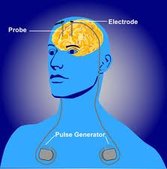
The cost associated with obesity in our world is enormous. Being somewhat zaftig myself, I know.
Recently, two women friends told me that they wear too-tight clothes in order to remind themselves not to eat too much. My way is to wear loose clothing so that I’m comfortable and happy. My weight has been quite stable for several years…well, actually it has declined, very slowly, by about 15 pounds. Would I like to be slim and willowy? You bet! And if I could wire up my brain for that I would do it in a heartbeat.

Three recent studies on obesity and the brain have shed light on this topic. Two of the studies were on mice, while the third was on young adults. Let’s begin with the teenagers.
Who among us never feels the pull of a television commercial for food? Commercials for fast food franchises make those French fries look even better than they do in real life. Or how about that cheesy pizza?
Research from the University of Michigan, the Oregon Research Institute and Yale University examined how the teenage brain responds to food commercials. As might be expected, brain regions associated with reward, attention and cognition lit up for all participants. Surprisingly, overweight participants showed less activation than those who were of normal weight. Were the overweight individuals simply more sated by these foods and therefore less excited by the possibility of eating them, or did they make an effort to control their reactions?
In the second study, researchers at the University of East Anglia identified appetite-regulating stem cells. While it used to be thought that appetite-controlling brain cells were fixed for life, this research demonstrated that new neurons of this type can be generated in the brains of both young and adult rodents.
The findings appeared in the April 5, 2013 issue of the Journal of Neuroscience. “Our long-term goal, of course, is to translate this work to humans, which could take up to five or 10 years. It could lead to a permanent intervention in infancy for those predisposed to obesity, or later in life as the disease becomes apparent,” says lead researcher Dr Mohammad K. Hajihosseini.

DBS has been found to control binge eating in mice. Tracy Bale, Ph.D. and colleagues at the University of Pennsylvania delivered DBS to the nucleus accumbens, a part of the brain involved in motivational behaviors. This resulted in significantly less consumption of high fat foods in mice accustomed to binging.
The news release from the Society for Neuroscience states:
Bale’s group also tested the long-term effects of DBS on obese mice that were given unlimited access to high-fat food. After four days of continuous DBS, the obese mice consumed fewer calories and their body weight dropped.

Figures on the cost of obesity to health care systems vary. According to the Centers for Disease Control and Prevention, the medical care costs of obesity in the United States are staggering. In 2008 dollars, these costs totaled about $147 billion.
(http://www.cdc.gov/obesity/adult/causes/index.html)
As for me, my brain and my waistline….we’ll see what manifests as I continue to place sartorial comfort ahead of pinching and punishing strategies.
